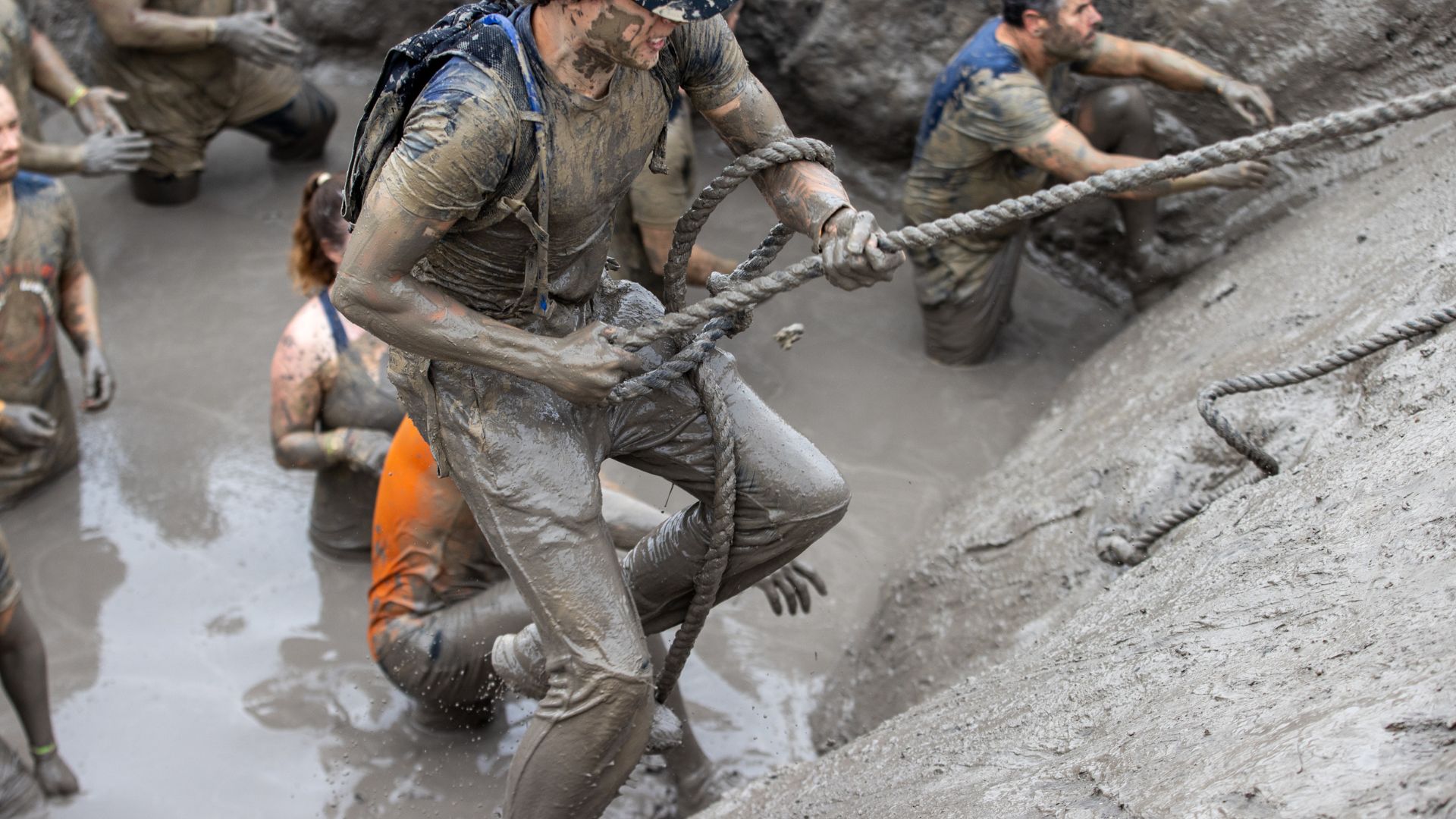'Tough Mudder' obstacle course tied to serious bacterial infections
After participating in a recent Tough Mudder obstacle course challenge, at least 22 people have reported developing odd rashes and fevers.

Nearly two dozen participants in a "Tough Mudder" competition, who crawled, climbed and waded through a mucky obstacle course, recently reported developing bumpy, pus-filled skin rashes and fevers.
Tough Mudders are miles-long obstacle courses intended to challenge participants' physical fitness and foster teamwork. On Aug. 19 and Aug. 20, "Mudders" assembled at Sonoma Raceway in California to attempt such a course, but within 24 hours of the event, many people started to get sick.
On Wednesday (Aug. 23), the County of Sonoma Department of Health Services issued an advisory to all Tough Mudder participants, warning them that multiple people had reported symptoms that could signal a potentially serious infection caused by a group of bacteria called Aeromonas.
"Sonoma County Department of Health Services has received dozens of phone calls and emails from participants either concerned about their health or reporting symptoms," Matt Brown, a Sonoma County spokesperson, told Live Science in an email Friday (Aug. 25).
"The only confirmed cases we have are from physicians who have reported to us," he said. "As of now, we have received seven positive cases of bacterial infections from Aeromonas." The department is operating under the assumption that Aeromonas bacteria are behind most infections tied to the event, he said.
"We are requesting that clinicians obtain cultures from infected patients and report the results to us," Brown added.
Related: New species of bacteria discovered after man is bitten by stray cat
Sign up for the Live Science daily newsletter now
Get the world’s most fascinating discoveries delivered straight to your inbox.
Most of the participants who have become ill have pus-filled bumps on their skin, fever, muscle aches and headaches, the department said in its advisory. "These symptoms could be indicative of a minor illness called Swimmers' Itch," an allergic reaction triggered by certain microscopic parasites found in animal droppings, the department said. According to the Centers for Disease Control and Prevention (CDC), swimmer's itch can cause small blisters and pimples, as well as tingling, burning or itching of the skin, but it doesn't usually require medical attention.
However, the Mudders' symptoms "can also indicate a Staph infection or other more serious bacterial infection such as Aeromonas," the health department said.
Staph infections are common; they are caused by a group of bacteria called Staphylococcus. Skin staph infections can cause reddish pimples and boils to erupt; the microbes can also enter the body through cuts and scrapes, spreading to other body parts and causing more serious infection. Staph infections can spread from person to person and require treatment with antibiotics.
Infections with Aeromonas bacteria also must be treated with antibiotics. The microbes, typically found in water, can cause mild to severe wound infections and bloodstream infections that sometimes lead to sepsis, a dangerous body-wide immune reaction. If ingested, the bacteria can cause diarrheal disease. They can also cause superficial to deep skin infections, associated with fever, malaise and pus-filled bumps, among other symptoms.
"If you participated in the race and have a rash with fever or other symptoms, please see your medical provider or, if you do not have a medical provider, your local emergency department," the health department advised. "You may wish to take this Advisory with you. Incubation period [time between exposure and the start of symptoms] is 12 to 48 hours."
Tough Mudder sent out similar advice in an email to participants, San Francisco's KGO-TV reported.
Dr. Karen Smith, Sonoma County's interim health officer, told KTVU that 22 Tough Mudder participants had contacted the department about rashes as of Wednesday (Aug. 23). If you need additional information, please call Sonoma County Public Health at (707) 565-4567.

Nicoletta Lanese is the health channel editor at Live Science and was previously a news editor and staff writer at the site. She holds a graduate certificate in science communication from UC Santa Cruz and degrees in neuroscience and dance from the University of Florida. Her work has appeared in The Scientist, Science News, the Mercury News, Mongabay and Stanford Medicine Magazine, among other outlets. Based in NYC, she also remains heavily involved in dance and performs in local choreographers' work.
Parasitic worm raises risk of cervical cancer, study finds
Cancer: Facts about the diseases that cause out-of-control cell growth










